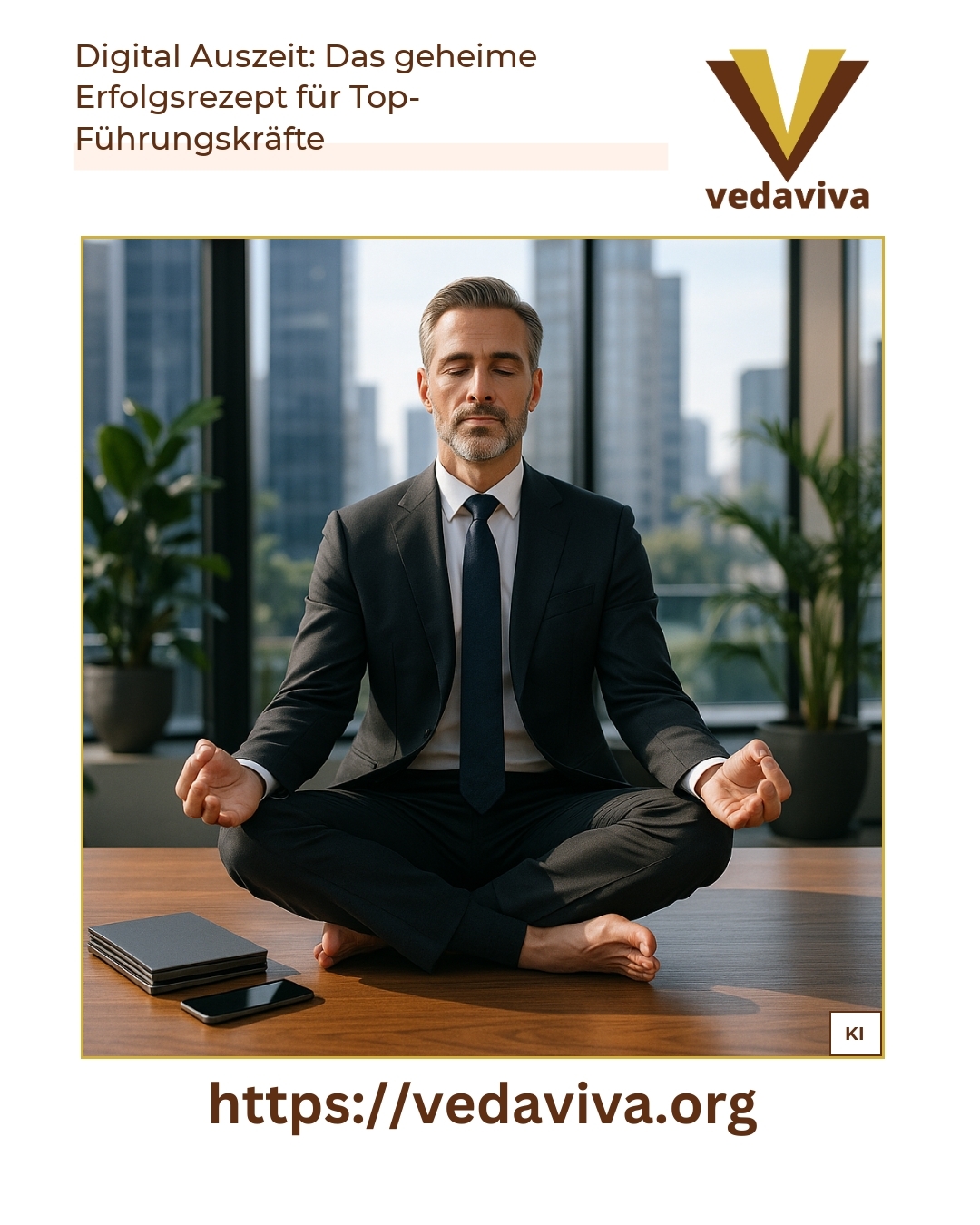Digital time-out - the basis for sustainable success for managers
A digital time-out is becoming increasingly important for managers. It represents a conscious decision to regularly disconnect from digital media and constant availability. These targeted breaks allow decision-makers to improve their focus and increase their performance. Especially in the hectic pace of everyday working life, digital time-out allows you to clear your head and find inner clarity. That's why more and more managers are using this strategy to tackle challenges with greater calm and act more successfully.
Why digital time-out is essential for top executives
In the digital age, managers are often available to their team around the clock. This leads to mental overload and loss of concentration. This is precisely where the digital time-out comes in: It creates a conscious switch-off from emails, smartphones and social media. This creates space for regeneration and better focussing. Many people report that they become more creative and can make better decisions as a result. In addition, a conscious approach to digital media improves the work-life balance and supports healthy stress management.
BEST PRACTICE at company XYZ (name changed due to NDA contract) One managing director opted for digital time-out by consciously switching off his mobile devices after work. He used the time for walks and reflective conversations. This led to greater problem-solving expertise and new creative impetus for the company.
How to successfully integrate a digital time-out into everyday working life
Implementing a digital time-out requires clear planning and fixed rules. For example, managers set defined times when they do not check emails or avoid digital communication. A fixed time in the morning or evening ensures more peace and quiet and a conscious start or end to the day. Breaks during meetings or lunch breaks without digital devices also promote relaxation and encourage interpersonal communication.
Another practical tip is to consciously plan digital time-outs during business trips or days off. Instead of being constantly available, managers can recharge their energy reserves by slowing down. It is important that the digital time-out is not seen as a sacrifice, but as conscious self-care.
Managers can also lead by example by encouraging their teams to also take digital breaks. Shared offline time strengthens team spirit and improves the working atmosphere.
BEST PRACTICE at ABC (name changed due to NDA contract) A department manager introduces fixed smartphone-free hours during core working hours. Employees use this time to concentrate on project work and report less distraction and higher productivity.
Practical tips for an effective digital time-out
Certain routines and behaviours are suitable for effectively implementing the digital time-out. For example, digital fasting periods, such as at weekends or after work, can promote mental relaxation. This reduces distractions and allows the mind to regenerate.
It also helps to switch off digital devices temporarily or move them to other rooms to avoid temptations. Activities such as walks, meditation or conversations with colleagues and family provide conscious breaks without digital stimulation. This creates more space for mindfulness and relaxation.
Entering fixed offline times in the calendar also supports the implementation. In this way, digital time off is not just a loose idea, but becomes a fixed habit. Managers report that they experience less stress and are more productive overall thanks to these conscious breaks.
BEST PRACTICE at DEF (name changed due to NDA contract) The CEO makes targeted use of digital downtime during longer business trips. He deliberately leaves his smartphone switched off in his free time and uses the time gained for creative dialogue with employees and for physical exercise outdoors.
Digital time-out - more than just switching off
The digital time-out does not mean a complete renunciation of digital technologies, but rather a conscious and mindful approach. It offers managers the opportunity to focus on the essentials and mentally regenerate. This creates new energy and clarity for complex tasks and decisions.
Those who regularly incorporate digital time-outs promote their mental health and reduce stress. At the same time, they improve their concentration and ability to be present in the moment. This has a positive effect on interpersonal relationships in the workplace and contributes to a more harmonious and productive working environment.
My analysis
Digital time-out is an important tool for remaining successful as a manager. It not only supports mental performance, but also has a positive effect on creativity and decision-making quality. Deliberate offline phases reduce stress and improve the work-life balance. Clear planning and consistent implementation are key to realising these benefits. Managers who manage their digital workload themselves and act as role models lay the foundation for sustainable success - both personally and in the team.
Further links from the text above:
[1] Digital detox in everyday working life
[2] Digital time-out: how decision-makers increase focus and performance
[3] Digital detox - how to detox digitally the right way
[8] Digital time-out: How managers can finally really ...
Legal notice: Coaching does not replace therapy. It serves personal development. I do not diagnose or promise a cure. My offer is for personal development and is not a substitute for medical, psychotherapeutic or curative treatment. Please consult a medically qualified specialist if you have any health complaints. The experiences described here are based on individual feedback from my clients. They are not a guarantee of success and do not replace medical or therapeutic counselling. For more information and if you have any questions, please contact Contact us on the topic or read further blog posts on the Topic here.













